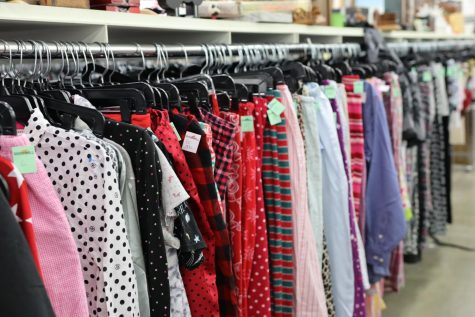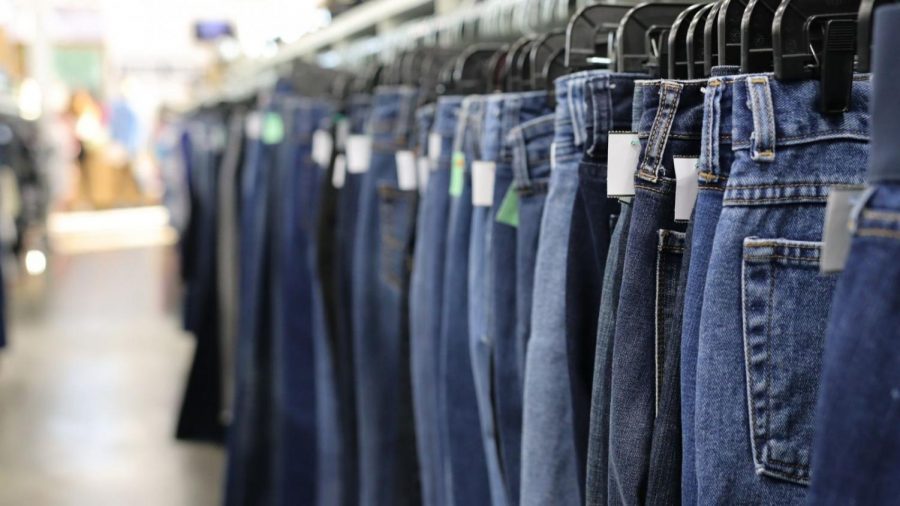Consumer culture sparks dialogue in community
November 29, 2021
The mass production of cheap and trendy clothing, better known as fast fashion, provides consumers with clothing they love before it stops trending. Purchasing clothing is no longer a seasonal thing; instead, it is now more of a pastime. The fast fashion industry is prone to earn support from a younger demographic as prices tend to remain inexpensive. Fast fashion consumers’ obliviousness in their contribution to this industry is why the issue is spreading.

“I think people like to buy what is trendy and cool at the moment, and fast fashion is more accessible and easier to find what you’re looking for,” senior Taylor Howard said, “but people don’t really consider the effects.”
During the process of manufacturing clothes, the fashion industry emits 1.2 billion tonnes of CO2. The industry alone releases 5% of the world’s greenhouse gases. The excessive amounts of water, waste and gaseous emissions only further contribute to climate change and the diminishing health of the planet.
“Personally, I don’t partake in [fast fashion],” junior Jackson Nichols said, “I can see where it could be convenient for other people; it’s accessible even in outlet malls and online as well.”
Gradually, everything is transitioning online for a faster, more convenient experience. Online shopping’s popularity increases each year since it now only takes a few clicks to expand a person’s wardrobe. As companies stretch out to reach those growing demands, the fashion industry produces cheaper clothing at a quicker rate.
According to Nichols, he thrifts his entire wardrobe since fast fashion alternatives aren’t difficult to find. Thrift shopping and buying second hand are alternatives to supporting fast fashion. Reusing clothes helps to reduce the amount of waste in landfills and buying second hand is less expensive than buying brand-new outfits. The different looks, styles and brands available at thrift stores are endless.

“I think people like to buy what is trendy and cool at the moment, and fast fashion is more accessible and easier to find what you’re looking for, but people don’t really consider the effects,” Howard said.
Social media plays a big role in how often trends change. The rate at which people get rid of clothes is growing, and landfills can’t keep up. The amount of clothing Americans throw out has doubled in the last two decades. It can take months or years for clothing to fully decompose, and by the time it’s decomposed, toxic chemicals and waste will have been added into the Earth’s soil and atmosphere.
“I would say that shopping second-hand is one of the easier ways you can do your part in helping the environment,” Howard said, “Not only is it fun to do with your friends, but it helps the environment. It’s [also] super important to remember to donate clothes you don’t want anymore.”


